Ginger Simpson's Blog, page 21
May 29, 2018
Gluten-Free Writing by Connie Vines #gluten-free, #Celiac Disease
Perhaps a more accurate title of today’s blog post would be a Gluten-Free Writer.
More than 55 diseases have been linked to gluten, the protein found in wheat, rye, and barley. It's estimated that 99% of the people who have either gluten intolerance or Celiac disease are never diagnosed.
It is also estimated that as much as 15% of the US population is gluten intolerant. Could you be one of them?
Could I be one of them?
I had been on thyroid replacement for most of my adult life. And, gluten intolerance, is a possibility.
A co-worker has celiac disease. One day I was complaining about joint pain, especially in my left shoulder. She asked my if I been checked for gluten-intolerance.
I enjoy baking for my family—especially gingerbread cookies, cakes, and the like. I had just purchased two specialty rolling-pins; one cut-out Disney characters and castles, the second mid-evil dragons. I saw my baking activities going up in smoke!
Clicking on the Mayo Clinic website I read:
1. Digestive issues such as gas, bloating, diarrhea and even constipation.
2. Keratosis Pilaris, (also known as 'chicken skin' on the back of your arms). This tends be as a result of a fatty acid deficiency and vitamin A deficiency secondary to fat-malabsorption caused by gluten damaging the gut.
3. Fatigue, brain fog or feeling tired after eating a meal that contains gluten.
4. Diagnosis of an autoimmune disease such as Hashimoto's thyroiditis, Rheumatoid arthritis, Ulcerative colitis, Lupus, Psoriasis, Scleroderma or Multiple sclerosis.
5. Neurologic symptoms such as dizziness or feeling of being off balance.
6. Hormone imbalances such as PMS, PCOS or unexplained infertility.
7. Migraine headaches.
8. Diagnosis of chronic fatigue or fibromyalgia. These diagnoses simply indicate your conventional doctor cannot pin point the cause of your fatigue or pain.
9. Inflammation, swelling or pain in your joints such as fingers, knees or hips.
10. Mood issues such as anxiety, depression, mood swings and ADD.
Except for: 6, 8, and 10, I was looking like poster-person for the condition.
I know I could have a larger problem (aside from having to forage for gluten-free products and prepare 2-types of meals each day). However, having listened to my co-worker’s challenges while trying to stay gluten-free and raise her family, I knew this was going to require a time-consuming adjustment.
How to test for gluten intolerance?
I was advised the single best way to determine if you have an issue with gluten is to do an elimination diet and take it out of your diet for at least 2 to 3 weeks and then reintroduce it. The longer you can eliminate it from your diet before reintroducing it, the better
Since I was almost-certain I was dealing with an intolerance, (confirmed by my doctor) I started with the elimination of gluten from my daily diet. Did I feel better? Yes. Did I notice immediately when I cheated? Yes. Though I didn’t realize I had consumed gluten many times.
How can you not know? Bread is bread. Wheat is. . .well, wheat is in almost every processed food you toss into your grocery cart.
Gluten is in soy-sauce. In soy-sauce?
My co-worker sent me over to the mini-Walmart for a gluten-free version. Surprisingly, this mini-Walmart has a well-stocked selection of gluten-free foods! Reasonably priced, too.
I did drive over to Sprouts for bullion-cubes (gluten is an ingredient in most soups).
1. Lifestyle change: Not only am I watching for soy (thyroid condition) I must check for obvious ingredients signaling gluten.
o Wheat
o Barley
o Rye
o Malt
o Brewer’s yeast
o Oats (unless specifically labeled gluten-free)
• Link to recipes to make your life less-challenging (for meal-prep anyway). https://celiac.org/live-gluten-free/g...
If you have a sweet-tooth, Sugar Babies and the small size Hershey Chocolate and Almond Joy bars are gluten-free.
Gum and vitamins are another story. . .
I must report that I am feeling significantly better as I progress on my gluten-free journey.
Please feel free to share any recipes, shopping hints in the comments section.
Happy Reading!
Connie
For more information visit these links. Always contact your physician/medical provider if you before embarking on any diet plan.
Gluten is a general name for the proteins found in wheat (wheatberries, durum, emmer, semolina, spelt, farina, farro, graham, KAMUT® khorasan wheat and einkorn), rye, barley and triticale – a cross between wheat and rye. Gluten helps foods maintain their shape, acting as a glue that holds food together. Gluten can be found in many types of foods, even ones that would not be expected.
Ask-the-DietitianJanelle Smith, MS, RD,specializes in gastrointestinal symptom management through appropriate nutrition and food choices, helping you adapt to living on a gluten-free diet.Watch the Gluten-Free Diet Video
Read more at https://celiac.org/live-gluten-free/g...
More than 55 diseases have been linked to gluten, the protein found in wheat, rye, and barley. It's estimated that 99% of the people who have either gluten intolerance or Celiac disease are never diagnosed.
It is also estimated that as much as 15% of the US population is gluten intolerant. Could you be one of them?
Could I be one of them?
I had been on thyroid replacement for most of my adult life. And, gluten intolerance, is a possibility.
A co-worker has celiac disease. One day I was complaining about joint pain, especially in my left shoulder. She asked my if I been checked for gluten-intolerance.
I enjoy baking for my family—especially gingerbread cookies, cakes, and the like. I had just purchased two specialty rolling-pins; one cut-out Disney characters and castles, the second mid-evil dragons. I saw my baking activities going up in smoke!
Clicking on the Mayo Clinic website I read:
1. Digestive issues such as gas, bloating, diarrhea and even constipation.
2. Keratosis Pilaris, (also known as 'chicken skin' on the back of your arms). This tends be as a result of a fatty acid deficiency and vitamin A deficiency secondary to fat-malabsorption caused by gluten damaging the gut.
3. Fatigue, brain fog or feeling tired after eating a meal that contains gluten.
4. Diagnosis of an autoimmune disease such as Hashimoto's thyroiditis, Rheumatoid arthritis, Ulcerative colitis, Lupus, Psoriasis, Scleroderma or Multiple sclerosis.
5. Neurologic symptoms such as dizziness or feeling of being off balance.
6. Hormone imbalances such as PMS, PCOS or unexplained infertility.
7. Migraine headaches.
8. Diagnosis of chronic fatigue or fibromyalgia. These diagnoses simply indicate your conventional doctor cannot pin point the cause of your fatigue or pain.
9. Inflammation, swelling or pain in your joints such as fingers, knees or hips.
10. Mood issues such as anxiety, depression, mood swings and ADD.
Except for: 6, 8, and 10, I was looking like poster-person for the condition.
I know I could have a larger problem (aside from having to forage for gluten-free products and prepare 2-types of meals each day). However, having listened to my co-worker’s challenges while trying to stay gluten-free and raise her family, I knew this was going to require a time-consuming adjustment.
How to test for gluten intolerance?
I was advised the single best way to determine if you have an issue with gluten is to do an elimination diet and take it out of your diet for at least 2 to 3 weeks and then reintroduce it. The longer you can eliminate it from your diet before reintroducing it, the better
Since I was almost-certain I was dealing with an intolerance, (confirmed by my doctor) I started with the elimination of gluten from my daily diet. Did I feel better? Yes. Did I notice immediately when I cheated? Yes. Though I didn’t realize I had consumed gluten many times.
How can you not know? Bread is bread. Wheat is. . .well, wheat is in almost every processed food you toss into your grocery cart.
Gluten is in soy-sauce. In soy-sauce?
My co-worker sent me over to the mini-Walmart for a gluten-free version. Surprisingly, this mini-Walmart has a well-stocked selection of gluten-free foods! Reasonably priced, too.
I did drive over to Sprouts for bullion-cubes (gluten is an ingredient in most soups).
1. Lifestyle change: Not only am I watching for soy (thyroid condition) I must check for obvious ingredients signaling gluten.
o Wheat
o Barley
o Rye
o Malt
o Brewer’s yeast
o Oats (unless specifically labeled gluten-free)
• Link to recipes to make your life less-challenging (for meal-prep anyway). https://celiac.org/live-gluten-free/g...
If you have a sweet-tooth, Sugar Babies and the small size Hershey Chocolate and Almond Joy bars are gluten-free.
Gum and vitamins are another story. . .
I must report that I am feeling significantly better as I progress on my gluten-free journey.
Please feel free to share any recipes, shopping hints in the comments section.
Happy Reading!
Connie
For more information visit these links. Always contact your physician/medical provider if you before embarking on any diet plan.
Gluten is a general name for the proteins found in wheat (wheatberries, durum, emmer, semolina, spelt, farina, farro, graham, KAMUT® khorasan wheat and einkorn), rye, barley and triticale – a cross between wheat and rye. Gluten helps foods maintain their shape, acting as a glue that holds food together. Gluten can be found in many types of foods, even ones that would not be expected.
Ask-the-DietitianJanelle Smith, MS, RD,specializes in gastrointestinal symptom management through appropriate nutrition and food choices, helping you adapt to living on a gluten-free diet.Watch the Gluten-Free Diet Video
Read more at https://celiac.org/live-gluten-free/g...
Published on May 29, 2018 00:30
April 21, 2018
How do you establish a story? What is your most unusual story? by Connie Vines #Round Robin
How do you establish a story? What is your most unusual story?
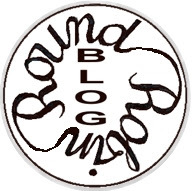
Thank you Rhobin for this month’s Round Robin Topic.
I, like most of the writers I know, are involved in workshops, plotting groups, and or online classes. Many of these are workshops sponsored by my local Orange County Chapter of Romance Writers, (past and present) are excellent in content and easy of application.
Christopher Vogler’s workshop “The Writer’s Journey” was a 2-day event which was designed for screen writers. While I have ghost-written a screenplay, which was adapted for the small screen oversees, this is not main focus. I have, however, applied what I leaned in this workshop to plot/outline my novels, novellas and expanded the W-plotting guide for my short-stories and anthologies.
And, of course, no writer’s library would be complete without out a physical copy and video version of Joseph Campbell’s “The Hero with a Thousand Faces”. His work goes into detail about the art of storytelling and why we, as humans are hardwired accept and expect the ‘myth’.
Having be active in The International Chapter of Romances Writers, I taught online classes on character development and plotting. I, as I’ve blogged about in the past, plot my stores in 3-chapter clusters due to story flow, pivotal-points, dark-moment, etc. Revisions are simpler for me this way because I can to insure my story’s pacing remain even.
After my basic story is plotted, my character sketched out and motivation defined, I need to add depth to my character and strength my conflict. I fine the series of writer’s reference books by Angela Ackerman and Becca Puglisi, of Writers Helping Writers fame, a must-have reference. However, I also rely on ‘unconventional’ conflict generation. Astrological signs are great form of conflict. (Remember I have always worked odd-jobs—some jobs more ‘odd’ than others, to support my writing habit.) One of my ‘temp’ assignments was for a local (and semi-well known) astrologer. I already had knowledge of astrology but he explained charting/predictions/ and conflict due to…well, you get the general idea. I have found this immensely helpful when my characters come from a similar background which can make ‘conflict’ a stretch.
I applied astrology (though it is never an element in the novel itself) to “Lynx” Rodeo Romance, Book 1 (BWL Publishing, Inc. print and e-book). Rachel is an Aquarius and Lynx is a Leo. Opposites in the Zodiac, but like all opposites there is attraction/conflict/ and a heart-felt story line.
If a reader is looking for the ‘astrological elements of my character development’ she will find them.
What is my most unusual story?
Meaning: not habitually or commonly occurring or done.
synonyms: uncommon, abnormal, atypical, unexpected, surprising, unfamiliar, different;
remarkable or interesting because different from or better than others.
All of my stories fall under this umbrella. My current release “Tanayia—Whisper upon the Water” is a historical YA novel with a Native American heroine and a setting in a boarding school in the 1880s. The story reads like a young girls’ diary but is written in the 1st person, narrative.
My novella series, would be truly ‘unusual’ because my 1st heroine is a Zombie. The second novella is titled “Bell, Book, & Gargoyle”.
Thank you for following my blog today.
Please stop by next month, too.
Connie
For more takes on the month’s topic visit:
Skye Taylor http://www.skye-writer.com/blogging_by_the_sea
Dr. Bob https://wp.me/p3Xihq-1eg
A.J. Maguire http://ajmaguire.wordpress.com/
Marci Baun http://www.marcibaun.com/blog/
Beverley Bateman http://beverleybateman.blogspot.ca/
Margaret Fieland http://margaretfieland.wordpress.com
Rhobin L Courtright http://www.rhobinleecourtright.com/
Judy Copek http://lynx-sis.blogspot.com/
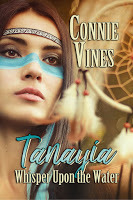
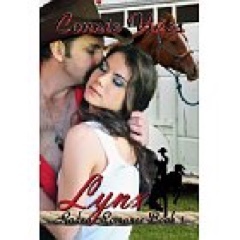

Thank you Rhobin for this month’s Round Robin Topic.
I, like most of the writers I know, are involved in workshops, plotting groups, and or online classes. Many of these are workshops sponsored by my local Orange County Chapter of Romance Writers, (past and present) are excellent in content and easy of application.
Christopher Vogler’s workshop “The Writer’s Journey” was a 2-day event which was designed for screen writers. While I have ghost-written a screenplay, which was adapted for the small screen oversees, this is not main focus. I have, however, applied what I leaned in this workshop to plot/outline my novels, novellas and expanded the W-plotting guide for my short-stories and anthologies.
And, of course, no writer’s library would be complete without out a physical copy and video version of Joseph Campbell’s “The Hero with a Thousand Faces”. His work goes into detail about the art of storytelling and why we, as humans are hardwired accept and expect the ‘myth’.
Having be active in The International Chapter of Romances Writers, I taught online classes on character development and plotting. I, as I’ve blogged about in the past, plot my stores in 3-chapter clusters due to story flow, pivotal-points, dark-moment, etc. Revisions are simpler for me this way because I can to insure my story’s pacing remain even.
After my basic story is plotted, my character sketched out and motivation defined, I need to add depth to my character and strength my conflict. I fine the series of writer’s reference books by Angela Ackerman and Becca Puglisi, of Writers Helping Writers fame, a must-have reference. However, I also rely on ‘unconventional’ conflict generation. Astrological signs are great form of conflict. (Remember I have always worked odd-jobs—some jobs more ‘odd’ than others, to support my writing habit.) One of my ‘temp’ assignments was for a local (and semi-well known) astrologer. I already had knowledge of astrology but he explained charting/predictions/ and conflict due to…well, you get the general idea. I have found this immensely helpful when my characters come from a similar background which can make ‘conflict’ a stretch.
I applied astrology (though it is never an element in the novel itself) to “Lynx” Rodeo Romance, Book 1 (BWL Publishing, Inc. print and e-book). Rachel is an Aquarius and Lynx is a Leo. Opposites in the Zodiac, but like all opposites there is attraction/conflict/ and a heart-felt story line.
If a reader is looking for the ‘astrological elements of my character development’ she will find them.
What is my most unusual story?
Meaning: not habitually or commonly occurring or done.
synonyms: uncommon, abnormal, atypical, unexpected, surprising, unfamiliar, different;
remarkable or interesting because different from or better than others.
All of my stories fall under this umbrella. My current release “Tanayia—Whisper upon the Water” is a historical YA novel with a Native American heroine and a setting in a boarding school in the 1880s. The story reads like a young girls’ diary but is written in the 1st person, narrative.
My novella series, would be truly ‘unusual’ because my 1st heroine is a Zombie. The second novella is titled “Bell, Book, & Gargoyle”.
Thank you for following my blog today.
Please stop by next month, too.
Connie
For more takes on the month’s topic visit:
Skye Taylor http://www.skye-writer.com/blogging_by_the_sea
Dr. Bob https://wp.me/p3Xihq-1eg
A.J. Maguire http://ajmaguire.wordpress.com/
Marci Baun http://www.marcibaun.com/blog/
Beverley Bateman http://beverleybateman.blogspot.ca/
Margaret Fieland http://margaretfieland.wordpress.com
Rhobin L Courtright http://www.rhobinleecourtright.com/
Judy Copek http://lynx-sis.blogspot.com/


Published on April 21, 2018 09:53
March 24, 2018
Where So My Stories Come From? by Connie Vines #Round Robin
Where do my ideas for stories come from?
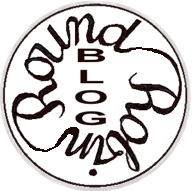
I first have a sense of time and place. My family and I were attending a rodeo in North Platte, Nebraska when I had a hint of a story. It was a few days later I began hearing dialog when were where having breakfast in a country cafe.
This is where the story, "Lynx" about a rodeo cowboy and small town waitress/college student began.
My current release, "Tanayia--Whisper upon the Water," book 1, began when I was a board member for the Title IX Indian Education Program.I was helping one of the students as she prepared to dance in a local powwow. It was I fingered the bead-work on her jingle-dress, that I knew I was going to write a historical novel from a young girl's pov.
Are these stories a apart of me? To a degree. Native American culture teaches that a Story finds the Story Teller. It is the Story Teller's duty to give the story life.
I believe this is true.
Because I am the filter, then many of my personal beliefs, emotions filter through. However, the story I tell is the character's story--not mine alone.
I believe my stories find me because of my I have a strong sense of duty, honor, of kindness, and the humor and joy I find in life.
My stories seem to always have a core social issue and a happy ending.
Thank you for stopping by today.
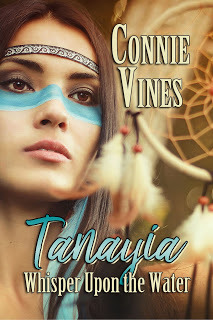
Amazon.paperback
Amazon Kindle
Amazon. Book Blurbs
apple itunes
Please stop by all of the members of our Round Robin Blog participants to see what tales they each have to share.
Happy Reading,
Connie
Skye Taylor http://www.skye-writer.com/blogging_by_the_sea
A.J. Maguire http://ajmaguire.wordpress.com/
Connie Vines http://mizging.blogspot.com/
Anne de Gruchy https://annedegruchy.co.uk/category/blog/
Helena Fairfax http://www.helenafairfax.com/blog
Margaret Fieland http://margaretfieland.wordpress.com
Dr. Bob Rich https://wp.me/p3Xihq-1dm
Fiona McGier http://www.fionamcgier.com/
Rhobin L Courtright http://www.rhobinleecourtright.com--
Published on March 24, 2018 16:19
March 20, 2018
The Writing Process by Connie Vines
Flash Back
The Writing Process
1. What am I working on right now? I work on multiple projects at once. Is this a good thing? Probably not—but rebel that I am, I do it anyway. I’m finishing up the Second Act in my novella, Bell, Book, and Gargoyle and I’m three quarters through my anthology: Gumbo Ya Ya (an anthology for woman who like romance Cajun). While all this is going on, Rand, Book 3 in my Rodeo Romance Series in bumping around in my head. And Book 4, Crystal Thunder, in my Rodeo Romance Series is being plotted in my Dramatica Pro a thought at a time.
2. How does my work differ from others in the genre?I write in multiple genres and each of genres have a different “tone and focus”—in other words, a different ‘voice’. My YA novel, Whisper upon the Water (Dream Award Winner, Nat’l Book Award nominee), is told in the 1st person. The novel is complex; not only a coming-of-age but also a transformation of society as a whole (Tay is Apache, Nde). My heroine begins as a girl on the verge of womanhood, a member of her band, speaking her native tongue. Kidnapped, held hostage, and manages to escape. Taken to a Native American boarding school, Tay learns a new language, skills, and encounters prejudice but also experiences kindness. Later, she must make a very difficult choice. Her decision will influence her life, as well as the lives of others. The novel is written for YA level and is reading selection for the G.A.T.E. program in numerous SoCal schools, and was selected as a “Teen Read” at libraries at the time of its release. My novel is being read by 7th grade students at an IB school this trimester, and student feedback is great!
In my Rodeo Romance Series: Lynx, Book 1 , is a contemporary western romance and set in Montana and Texas. This book is lively. Rachel is spirited and Lynx is hot and sexy—but both have had hardships in life. My secondary characters add elements of comedy and unexpected plot twists. (Winner of the Award of Excellence, Finalist: H.O.L.T. Medallion, Orange Rose and Rocky Mt. Gold contests). Brede, Book 2, is a western romantic suspense, set in New Mexico. Since the novel is romantic suspense, I do not wish create a spoiler in this blog post. I will say everyone one loves old Caldwell, the ornery old cook, and his cohorts. Brede is strong-willed and caring; Amberlynn is beautiful and in mortal danger. Rand, Book 3, is told in the 1st person: ChickLit meets the Wild West and goes straight to Hollywood. Lights, Camera, and a boot-full of Action! I am having, fun, fun with this novel!
Crystal Thunder, Book 4 , has a more serious tone and is set in the Dakotas.
My stories are diverse, because, like most of us my life experiences are unique.
My stories take place in places I have lived, or where I have vacationed. I know my subject matter. My father rodeoed while in high school in Texas. I grew up in a career military family and my childhood was nomadic. I have been involved in Native America culture and educational programs. My husband is a Louisiana country boy. I now live in SoCal—where, of course, I have met Hollywood television stars and facilitated workshops.
3. Why do I write what I do?The story calls to me, it is that simple. I have a feeling of time and place. Then I begin hearing snatches of dialogue (like when you are sitting in a coffee shop and you over hear snippets of conversation). The story invades my life (well it does, just ask my husband). Today, I’m listening to Zydeco music and I have gumbo in my crockpot. I am compelled to complete the story. Native American culture says, “The story comes to the Storyteller. The Storyteller must bring it to life.”
4. How does my writing process work?For short stories, novellas and anthologies, I utilize the basic W-plot with extra twists and pivotal points. When I am writing a novel, or a novel series, I plot in acts and work with three chapters at a time (1-3, 4-6, etc.). With the exception of short stories, I compile detailed backgrounds, motivation, and personality traits. I also conduct interviews, research, and immerse myself in the ‘culture/environment’ I am creating. It is then I begin the first draft of my novel. This will change as my characters begin to take over the book. Any writer will agree with me, under no circumstances can you force you characters to act against his/her will. You can, however, place huge obstacles in the way and see what happens.
Is my first draft perfect? No. Is my third draft publishable? It’s probably close. At this point in the writing process, if I have any bumpy spots, I’ll have writer friend look over those pages. She will give her opinion and suggestions—that I may, or may not follow (though I always give the input careful consideration). Writing, after all, is subjective—as is a reader’s preference for one novel over another.
To read the first chapter teasers of my novels please follow this link: http://www.amazon.com/Connie-Vines/e/B004C7W6PE
My Book Trailer to Brede, Rodeo Romance Book 2
Thank you for stopping by. I hope you have stop by next week at Dishin’ It Out out to read my next blog post.
Happy Reading,
Connie Vines
The Writing Process
1. What am I working on right now? I work on multiple projects at once. Is this a good thing? Probably not—but rebel that I am, I do it anyway. I’m finishing up the Second Act in my novella, Bell, Book, and Gargoyle and I’m three quarters through my anthology: Gumbo Ya Ya (an anthology for woman who like romance Cajun). While all this is going on, Rand, Book 3 in my Rodeo Romance Series in bumping around in my head. And Book 4, Crystal Thunder, in my Rodeo Romance Series is being plotted in my Dramatica Pro a thought at a time.
2. How does my work differ from others in the genre?I write in multiple genres and each of genres have a different “tone and focus”—in other words, a different ‘voice’. My YA novel, Whisper upon the Water (Dream Award Winner, Nat’l Book Award nominee), is told in the 1st person. The novel is complex; not only a coming-of-age but also a transformation of society as a whole (Tay is Apache, Nde). My heroine begins as a girl on the verge of womanhood, a member of her band, speaking her native tongue. Kidnapped, held hostage, and manages to escape. Taken to a Native American boarding school, Tay learns a new language, skills, and encounters prejudice but also experiences kindness. Later, she must make a very difficult choice. Her decision will influence her life, as well as the lives of others. The novel is written for YA level and is reading selection for the G.A.T.E. program in numerous SoCal schools, and was selected as a “Teen Read” at libraries at the time of its release. My novel is being read by 7th grade students at an IB school this trimester, and student feedback is great!
In my Rodeo Romance Series: Lynx, Book 1 , is a contemporary western romance and set in Montana and Texas. This book is lively. Rachel is spirited and Lynx is hot and sexy—but both have had hardships in life. My secondary characters add elements of comedy and unexpected plot twists. (Winner of the Award of Excellence, Finalist: H.O.L.T. Medallion, Orange Rose and Rocky Mt. Gold contests). Brede, Book 2, is a western romantic suspense, set in New Mexico. Since the novel is romantic suspense, I do not wish create a spoiler in this blog post. I will say everyone one loves old Caldwell, the ornery old cook, and his cohorts. Brede is strong-willed and caring; Amberlynn is beautiful and in mortal danger. Rand, Book 3, is told in the 1st person: ChickLit meets the Wild West and goes straight to Hollywood. Lights, Camera, and a boot-full of Action! I am having, fun, fun with this novel!
Crystal Thunder, Book 4 , has a more serious tone and is set in the Dakotas.
My stories are diverse, because, like most of us my life experiences are unique.
My stories take place in places I have lived, or where I have vacationed. I know my subject matter. My father rodeoed while in high school in Texas. I grew up in a career military family and my childhood was nomadic. I have been involved in Native America culture and educational programs. My husband is a Louisiana country boy. I now live in SoCal—where, of course, I have met Hollywood television stars and facilitated workshops.
3. Why do I write what I do?The story calls to me, it is that simple. I have a feeling of time and place. Then I begin hearing snatches of dialogue (like when you are sitting in a coffee shop and you over hear snippets of conversation). The story invades my life (well it does, just ask my husband). Today, I’m listening to Zydeco music and I have gumbo in my crockpot. I am compelled to complete the story. Native American culture says, “The story comes to the Storyteller. The Storyteller must bring it to life.”
4. How does my writing process work?For short stories, novellas and anthologies, I utilize the basic W-plot with extra twists and pivotal points. When I am writing a novel, or a novel series, I plot in acts and work with three chapters at a time (1-3, 4-6, etc.). With the exception of short stories, I compile detailed backgrounds, motivation, and personality traits. I also conduct interviews, research, and immerse myself in the ‘culture/environment’ I am creating. It is then I begin the first draft of my novel. This will change as my characters begin to take over the book. Any writer will agree with me, under no circumstances can you force you characters to act against his/her will. You can, however, place huge obstacles in the way and see what happens.
Is my first draft perfect? No. Is my third draft publishable? It’s probably close. At this point in the writing process, if I have any bumpy spots, I’ll have writer friend look over those pages. She will give her opinion and suggestions—that I may, or may not follow (though I always give the input careful consideration). Writing, after all, is subjective—as is a reader’s preference for one novel over another.
To read the first chapter teasers of my novels please follow this link: http://www.amazon.com/Connie-Vines/e/B004C7W6PE
My Book Trailer to Brede, Rodeo Romance Book 2
Thank you for stopping by. I hope you have stop by next week at Dishin’ It Out out to read my next blog post.
Happy Reading,
Connie Vines
Published on March 20, 2018 00:30
March 4, 2018
Flash Back to the Past!I miss Justin Wilson's Cajun Cooki...
Flash Back to the Past!
I miss Justin Wilson's Cajun Cooking Show.
I watched him on weekends. My husband is from Louisiana and enjoyed the mini vacation to the south Gotta love Justin Wilson's funny stories. And, no matter what was on the stove, everything needed more wine! he would tell an no matter what every needed more wine!
https://www.youtube.com/watch?v=eK4umRMJlrs
I miss Justin Wilson's Cajun Cooking Show.
I watched him on weekends. My husband is from Louisiana and enjoyed the mini vacation to the south Gotta love Justin Wilson's funny stories. And, no matter what was on the stove, everything needed more wine! he would tell an no matter what every needed more wine!
https://www.youtube.com/watch?v=eK4umRMJlrs
Published on March 04, 2018 00:30
February 27, 2018
Author Branding—Don’t Muddy the Waters (Part 1) by Connie Vines
Since this is my wedding anniversary, I'm posting a previous Bog Post.
I have been researching this topic via workshops, online chats, and discussion with other authors for several years.

The workshop I attended recently wrapped up the final meeting with: author branding was totally unnecessary. (Well, that was a total waste of my money!)
So, does Connie have a brand?
No.
Does Connie still think she needs a brand?
Yes. And no.
I know I need a memorable brand for each series that I write. However, since I write in multiple genres, I don’t know if an all-encompassing brand is possible. Or even practical.
We all know how much Connie loves to do research, enroll in online workshops, and conduct impromptu interviews with total strangers (to quote my husband, while we are in line at Souplantation, “why were you asking that man about the cost of a sleeve of tattoos? You are not going there for the sake of research). I handed him a napkin and smiled. Now was not, I decided, the time to remind him that I had my eyebrows and eyeliner enhanced with “wake-up with make-up” tasteful, but still permanent ink.
How to Design Your Author Brand
Okay, it’s scramble time. Find a piece of paper and something to write with. You can use the note app in your phone, but I think pen to paper works better in this case. (If you write under more than one pen name, just select one.)
Ready?
Write down what your author brand is. You have 10 seconds. Go!
Time’s up.
Were you able to write down your band? Did you use 6 words or less?
Good for you. You probably have a good idea of what your brand is.
If you didn’t (you are with me) don’t worry. We will go about fixing the problem.
Brands Need to Be Specific
If you failed, the above test the reasons are likely because:
1. You don’t really know what your brand is yet.
2. You are over-describing your brand and couldn’t write it all down fast/concisely enough.
Now is the time to sit and ponder. Strip away the contradictions, muddiness, superfluous.
What does a brand do? A brand is a signal to customers to know what to expect when they see it.
Once they have had experience with a brand, they (hopefully) know what to expect. Ideally this is a favorable expectation that encourages them to purchase your product, talk to their friends, and take chances on your next release.
How about a brand like this?
“Daring, Thrilling, Romantic, Action Packed.”
What if we change it to…
“Daring, Thrilling, Sexy, Action Packed”
A big difference isn’t it?
I selected very genre-esque words. This was my intention because genres play a big role in branding. Brands are also about trust.
Remember genres and sub-genres are their own brands.
This is really important. We already have a mind-set/expectations when we select a genre to read. If you select a “Historical” novel (unless it is a sub-genre) you do not expect or probably appreciate elements of Urban Fantasy in the story-line. Riding in stage coach, you prim-and-so proper heroine isn’t going to mesh with a hidden magical world featuring Fae, Vampires, and Werewolves. So, unless you plan on inventing your own sub-genre (SteamPunk/StoneagePunk) with a limited readership, consider what you are inheriting from your genre.
Following these guidelines, I will attempt to come up with a brand for my current Rodeo Romance Series (BLW, BooksWeLove, Publsihing.).
Genre: Contemporary Romance (Lynx), Romantic Suspense (Brede), Contemporary Romance/Humor (Rand), Romantic Suspense (TBT).
I’ll go with Romance as a genre.
Now to the dictionary and thesaurus.
For part 2, stop by next week.
(Feel free to post idea :-))
Connie
I have been researching this topic via workshops, online chats, and discussion with other authors for several years.

The workshop I attended recently wrapped up the final meeting with: author branding was totally unnecessary. (Well, that was a total waste of my money!)
So, does Connie have a brand?
No.
Does Connie still think she needs a brand?
Yes. And no.
I know I need a memorable brand for each series that I write. However, since I write in multiple genres, I don’t know if an all-encompassing brand is possible. Or even practical.
We all know how much Connie loves to do research, enroll in online workshops, and conduct impromptu interviews with total strangers (to quote my husband, while we are in line at Souplantation, “why were you asking that man about the cost of a sleeve of tattoos? You are not going there for the sake of research). I handed him a napkin and smiled. Now was not, I decided, the time to remind him that I had my eyebrows and eyeliner enhanced with “wake-up with make-up” tasteful, but still permanent ink.
How to Design Your Author Brand
Okay, it’s scramble time. Find a piece of paper and something to write with. You can use the note app in your phone, but I think pen to paper works better in this case. (If you write under more than one pen name, just select one.)
Ready?
Write down what your author brand is. You have 10 seconds. Go!
Time’s up.
Were you able to write down your band? Did you use 6 words or less?
Good for you. You probably have a good idea of what your brand is.
If you didn’t (you are with me) don’t worry. We will go about fixing the problem.
Brands Need to Be Specific
If you failed, the above test the reasons are likely because:
1. You don’t really know what your brand is yet.
2. You are over-describing your brand and couldn’t write it all down fast/concisely enough.
Now is the time to sit and ponder. Strip away the contradictions, muddiness, superfluous.
What does a brand do? A brand is a signal to customers to know what to expect when they see it.
Once they have had experience with a brand, they (hopefully) know what to expect. Ideally this is a favorable expectation that encourages them to purchase your product, talk to their friends, and take chances on your next release.
How about a brand like this?
“Daring, Thrilling, Romantic, Action Packed.”
What if we change it to…
“Daring, Thrilling, Sexy, Action Packed”
A big difference isn’t it?
I selected very genre-esque words. This was my intention because genres play a big role in branding. Brands are also about trust.
Remember genres and sub-genres are their own brands.
This is really important. We already have a mind-set/expectations when we select a genre to read. If you select a “Historical” novel (unless it is a sub-genre) you do not expect or probably appreciate elements of Urban Fantasy in the story-line. Riding in stage coach, you prim-and-so proper heroine isn’t going to mesh with a hidden magical world featuring Fae, Vampires, and Werewolves. So, unless you plan on inventing your own sub-genre (SteamPunk/StoneagePunk) with a limited readership, consider what you are inheriting from your genre.
Following these guidelines, I will attempt to come up with a brand for my current Rodeo Romance Series (BLW, BooksWeLove, Publsihing.).
Genre: Contemporary Romance (Lynx), Romantic Suspense (Brede), Contemporary Romance/Humor (Rand), Romantic Suspense (TBT).
I’ll go with Romance as a genre.
Now to the dictionary and thesaurus.
For part 2, stop by next week.
(Feel free to post idea :-))
Connie
Published on February 27, 2018 00:00
February 25, 2018
Hollywood Glam and Sunday Coffee by Connie Vines
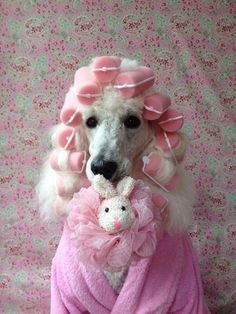 "Tell them I'm indisposed."
"Tell them I'm indisposed."Happy Sunday!
Hollywood Glam with your coffee, anyone?

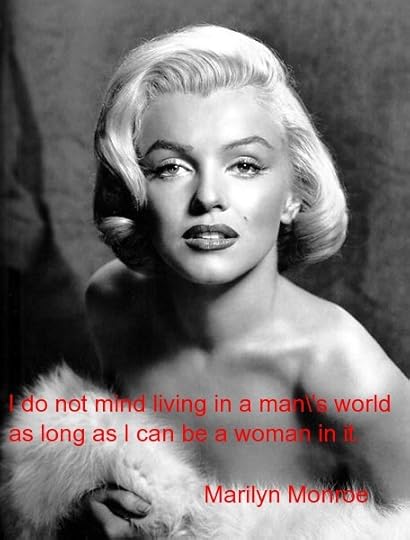

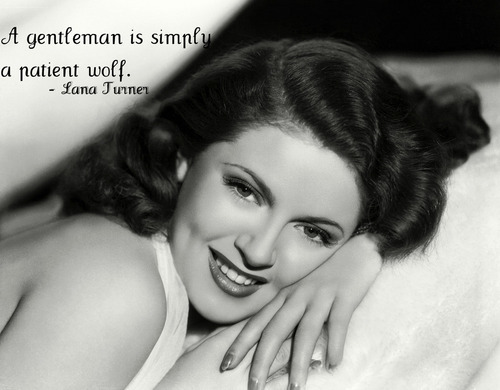


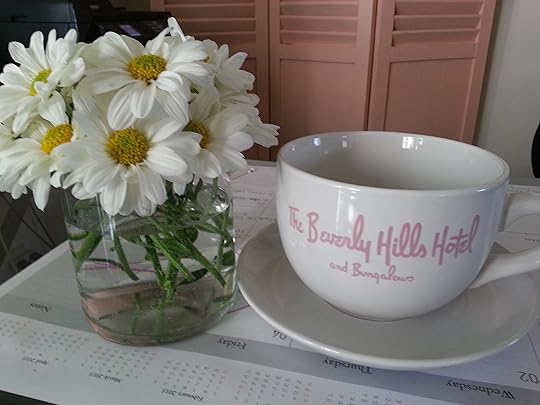
I hope you enjoyed a splash of Hollywood with your coffee.
Happy Reading :-)
Connie
Published on February 25, 2018 01:00
February 24, 2018
Fictional Teachers By Connie Vines #Round Robin Feb.
Topic: Your characters come from your mind, from other people you've witnessed, but can you create their lives without them revealingsomething about yourself? Have they ever taught you something?

So are my fictional characters my 'great reveal'? To a degree I believe this to be true. Every story is filtered through an author's view of the world, emotions, and life experience--at least for my heroine.
Another challenging topic from Robin for our group of Round Robin Blog authors.
However, there is also a curtain we all have firmly in place--revealing only what we wish to reveal to others. The same is true of our characters. My heroine will be more like 'me' in my rough draft than she will be by the time I've completed my novel.
In my soon to be released "Gumbo Ya Ya an anthology who like romance Cajun". One of my heroines, Celeste, jumps overboard into a raging sea!
Not a plan of action in my 'non-fictional' life. Runaway horse? Yep, I'd saddle up. Yoga on a mountain top? Sure, with a soft yoga mat. Dine on escargot, Rocky Mountain oysters, frog legs? I have. Hold a 6 ft. python--yes, though someone else had a firm hold of upper portion of snake's body (no accidental snake-licks for me). Jump into the sea? Never. . .ever.

I seem to be be more removed--meaning more analytical in the development of my secondary characters. This is especially true when I seeped myself in the secondary character's world, work, and point of view. I become the secondary characters, like a method actor.
Now, my villains must have a motivation with a trigger rooted in a past event/or recent trauma. Providing me with way I can explain (not justify) the villain's twisted reasoning/action.
Yes, some people are evil, truly evil. However, I have yet write a novel requiring I delve into that degree darkness, and doubt I every will.
The second part of the topic: Have my characters every taught me something?
My current release, "Tanayia" Whisper upon the Water, Book 1 Native American/First People Series, taught me to not only view life, but experience the hardships though the eyes of another person.
Opening Prologue 1868:
The Governor of New Mexico decreed that all Indian children over six be educated in the ways of the white man.
Indian Commissioner, Thomas Morgan, said: It was cheaper to educate the Indians than to kill them.
1880, Apacheria, Season of Ripened Berries
Isolated bands of colored clay on white limestone remained where the sagebrush was stripped from Mother Earth by sudden storms and surface waters. Desolate. Bleak. A land made of barren rocks and twisted paths that reached out into the silence.
A world of hunger and hardship. This is my world. I am Tanayia. I was born thirteen winters ago. My people and I call ourselves "Nde" this means "The People". The white man calls us Apache.
Stop by and see what stories other member of our Round Robin Blog authors have to share.
See you next month,
Connie
Amazon.com
Barnes and Noble
Skye Taylor http://www.skye-writer.com/blogging_by_the_seaA.J. Maguire http://ajmaguire.wordpress.com/
Marci Baun http://www.marcibaun.com/blog/
Marie Laval http://marielaval.blogspot.co.uk/
Judith Copek http://lynx-sis.blogspot.com/
Dr. Bob Rich https://wp.me/p3Xihq-1c1
Rachael Kosinski http://rachaelkosinski.weebly.com/Beverley Bateman http://beverleybateman.blogspot.ca/
Rhobin L Courtright http://www.rhobinleecourtright.com--

So are my fictional characters my 'great reveal'? To a degree I believe this to be true. Every story is filtered through an author's view of the world, emotions, and life experience--at least for my heroine.
Another challenging topic from Robin for our group of Round Robin Blog authors.
However, there is also a curtain we all have firmly in place--revealing only what we wish to reveal to others. The same is true of our characters. My heroine will be more like 'me' in my rough draft than she will be by the time I've completed my novel.
In my soon to be released "Gumbo Ya Ya an anthology who like romance Cajun". One of my heroines, Celeste, jumps overboard into a raging sea!
Not a plan of action in my 'non-fictional' life. Runaway horse? Yep, I'd saddle up. Yoga on a mountain top? Sure, with a soft yoga mat. Dine on escargot, Rocky Mountain oysters, frog legs? I have. Hold a 6 ft. python--yes, though someone else had a firm hold of upper portion of snake's body (no accidental snake-licks for me). Jump into the sea? Never. . .ever.

I seem to be be more removed--meaning more analytical in the development of my secondary characters. This is especially true when I seeped myself in the secondary character's world, work, and point of view. I become the secondary characters, like a method actor.
Now, my villains must have a motivation with a trigger rooted in a past event/or recent trauma. Providing me with way I can explain (not justify) the villain's twisted reasoning/action.
Yes, some people are evil, truly evil. However, I have yet write a novel requiring I delve into that degree darkness, and doubt I every will.
The second part of the topic: Have my characters every taught me something?
My current release, "Tanayia" Whisper upon the Water, Book 1 Native American/First People Series, taught me to not only view life, but experience the hardships though the eyes of another person.

Opening Prologue 1868:
The Governor of New Mexico decreed that all Indian children over six be educated in the ways of the white man.
Indian Commissioner, Thomas Morgan, said: It was cheaper to educate the Indians than to kill them.
1880, Apacheria, Season of Ripened Berries
Isolated bands of colored clay on white limestone remained where the sagebrush was stripped from Mother Earth by sudden storms and surface waters. Desolate. Bleak. A land made of barren rocks and twisted paths that reached out into the silence.
A world of hunger and hardship. This is my world. I am Tanayia. I was born thirteen winters ago. My people and I call ourselves "Nde" this means "The People". The white man calls us Apache.
Stop by and see what stories other member of our Round Robin Blog authors have to share.
See you next month,
Connie
Amazon.com
Barnes and Noble
Skye Taylor http://www.skye-writer.com/blogging_by_the_seaA.J. Maguire http://ajmaguire.wordpress.com/
Marci Baun http://www.marcibaun.com/blog/
Marie Laval http://marielaval.blogspot.co.uk/
Judith Copek http://lynx-sis.blogspot.com/
Dr. Bob Rich https://wp.me/p3Xihq-1c1
Rachael Kosinski http://rachaelkosinski.weebly.com/Beverley Bateman http://beverleybateman.blogspot.ca/
Rhobin L Courtright http://www.rhobinleecourtright.com--
Published on February 24, 2018 02:00
February 19, 2018
Sunday Breakfast or Breakfast on the Go! by Connie Vines
Today I thought I 'dish out' a favorite breakfast recipe of mine.
Why it this a favorite of mine?
It's transportableIt's make-a-head and freezable.It is loaded with protein and yummy.
Breakfast Egg Cups Recipe

Serves: 8
Prep Time: 10 m
Cook Time: 20 m
Print this Recipe Save to Prepear What is Prepear?
Ingredients
1 – cooking spray
6 large – egg
1/4 cup – milk
1/8 teaspoon – salt
1/8 teaspoon – black pepper, ground
1 medium – bell pepper, red
3/4 cup – spinach
1/4 cup – cheddar cheese, shredded
Directions
Spray a muffin tin with cooking spray and set aside. Preheat oven to 375°F.
Whisk the eggs and milk together in a bowl. Season with salt and pepper.
Dice the bell pepper into small pieces. Stack the spinach leaves, roll them up, and slice them thin. (This method is called chiffonade.)
Add the peppers, spinach, and shredded cheddar to the egg mixture.
Fill muffin cups 3/4 full and bake for 20-25 minutes until centers are set and no longer runny.
Allow to cool slightly before serving.
Extras may be stored in an air-tight container in the refrigerator for up to a week or in a freezer-safe container in the freezer for up to a month. Microwave thawed egg cups on high for 45-60 seconds or until hot.
Nutrition Facts
NUTRITION PER SERVING% DAILY VALUE
Calories: 78 4%
Fat: 5 g 8%
Carb: 1 g 0%
Fiber: 0 g 0%
Protein: 6 g 12%
Sugar: 1 g
You may add different veggies, meats, cheeses, to your personal preference. You may also use a cupcake liner instead of oil or non-stick cooking spray..
Enjoy!
Connie
Why it this a favorite of mine?
It's transportableIt's make-a-head and freezable.It is loaded with protein and yummy.
Breakfast Egg Cups Recipe

Serves: 8
Prep Time: 10 m
Cook Time: 20 m
Print this Recipe Save to Prepear What is Prepear?
Ingredients
1 – cooking spray
6 large – egg
1/4 cup – milk
1/8 teaspoon – salt
1/8 teaspoon – black pepper, ground
1 medium – bell pepper, red
3/4 cup – spinach
1/4 cup – cheddar cheese, shredded
Directions
Spray a muffin tin with cooking spray and set aside. Preheat oven to 375°F.
Whisk the eggs and milk together in a bowl. Season with salt and pepper.
Dice the bell pepper into small pieces. Stack the spinach leaves, roll them up, and slice them thin. (This method is called chiffonade.)
Add the peppers, spinach, and shredded cheddar to the egg mixture.
Fill muffin cups 3/4 full and bake for 20-25 minutes until centers are set and no longer runny.
Allow to cool slightly before serving.
Extras may be stored in an air-tight container in the refrigerator for up to a week or in a freezer-safe container in the freezer for up to a month. Microwave thawed egg cups on high for 45-60 seconds or until hot.
Nutrition Facts
NUTRITION PER SERVING% DAILY VALUE
Calories: 78 4%
Fat: 5 g 8%
Carb: 1 g 0%
Fiber: 0 g 0%
Protein: 6 g 12%
Sugar: 1 g
You may add different veggies, meats, cheeses, to your personal preference. You may also use a cupcake liner instead of oil or non-stick cooking spray..
Enjoy!
Connie
Published on February 19, 2018 01:00
January 19, 2018
What is Your Preferred Way of Exposing Your Characters? By Connie Vines
Topic: Point of View
Since I write in multiple genres, my point of view seems to remain the same within a specific genre.
My YA/Teen/Tween stories and novels are told in the first person.
For me this is the most personal for the reader--meaning a reader is intimately involved in the story and steps into the main character’s mind. The reader experiences emotions intensely, because he/she becomes the character. And since few YA/Teens/Tweens are familiar with a ‘none-tech’ world, this is the best way to expose them to history/a new setting, etc.
The single POV helps the story unfold in a way to allow the reader to understands life from an 1890 character. No reaching for a cell phone, or grabbing a pizza for dinner!
When I write in first person, I do not change point of view of view. I rely on dialogue or the main character’s observations to keep the reader aware of changes in plot etc.
The opening from my current release, Tanayia: Whisper upon the Water, Native American Series, Book 1
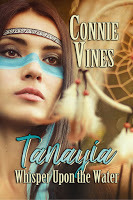
1880, Apacheria, Season of Ripened Berries
Isolated bands of colored clay on white limestone remained where the sagebrush was stripped from Mother Earth by sudden storms and surface waters. Desolate. Bleak. A land made of barren rocks and twisted paths that reached out into silence.
A world of hunger and hardship. This is my world. I am Tanayia. I was born thirteen years ago. My people and call ourselves “Nde” this means “The People”. The white man calls us Apache.
Second person point of view is far more challenging for me. I find if an author uses second person in literature, he/she does so to engage the audience more and to make them part of the story and action or possibly make a thematic point about the characters. Second person is much more common in nonfiction, especially self-help books and business writing.
Examples
• "You have brains in your head. You have feet in your shoes. You can steer yourself any direction you choose. You’re on your own. And you know what you know. And YOU are the guy who’ll decide where to go." (Dr. Seuss, Oh, the Places You’ll Go! Random House, 1990).
• Think back to when you were a kid and read Choose Your Own Adventure books. Weren’t those fun? You got to be the main character and decide where the story went. Well, those were all in 2nd person.
Third person point of view. Third person is most often used in novels. Many readers prefer third person because it is so popular. It can work from the omniscient viewpoint of the author telling the story even to informing the reader what the character or different characters are thinking.
I write my Contemporary/ Romantic Suspense/ Paranormal in third person in a character’s limited viewpoint. Here a character tells their story through their own viewpoint and senses. It tells what they say, see, hear, feel or taste, and even what they think. Different characters’ viewpoints can be used, but a clear demarcation is used to show when the narrative switches from one character to another. I like this method because it remains very intimate to the reader, but allows easy change between characters, too, unlike first or second voice.
Opening scene: Lynx, Rodeo Romance, Book 1
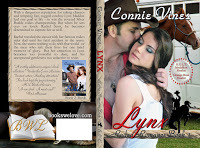
Charlene hadn’t told Rachel that she’d fixed her up with a cowboy, much less Lynx Maddox, the “Wild Cat” of the rodeo circuit. Rachel signed. She should have known. After all, Charlene only dated men who wore booth and Stetsons.
Rachel Scott cringed at the very thought even as her gaze took in the breadth of Lynx Maddox’s chest, his broad shoulders, and dark green eyes that scanned her with blatant masculine approval.
A snippet from: Brede, Rodeo Romance, Book 2
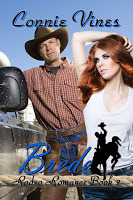
Brede couldn’t seem to stop watching and worrying about Kate. Even though she was trying to hide behind the menu, he sensed her tension. He had to grip the edge of the table to keep from taking the menu out of her hands and looking into those wide green eyes again, just to catch a glimpse of whatever it was he saw when she looked at him. But he wasn’t going to do anything rash. Not now, not ever. He wasn’t going to take her back to the ranch—not even if Caldwell retired and it meant eating peanut butter sandwiches from here to eternity.
He might gnaw his tongue off trying to keep silent, but he wasn’t going to ask her to stay.
For a change of pace: Here Today, Zombie Tomorrow, A Sassy & Fun Fantasy
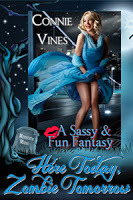
Since her sister was contemplating the contents of a tin filled with Danish cookies, Meredith found herself cataloging the events that led up to her ‘accident’.
A charter member of the SoCal Arts Association, she’d been participating in the annual Zombie Walk Festival in Long Beach when it ‘happened’. . .
I hope you enjoyed my post and the snippets from my stories.
amazon.comamazon.com barnes and noble BWL Publishing
Please visit stop by and see what all of our Round Rhobin participants have to say on this month’s topic!
Happy Reading,
Connie
Dr. Bob Rich https://wp.me/p3Xihq-1ag
Helena Fairfax http://www.helenafairfax.com/blog
Fiona McGier http://www.fionamcgier.com/
Judith Copek http://lynx-sis.blogspot.com/
Marci Baun http://www.marcibaun.com/blog/
Anne de Gruchy https://annedegruchy.co.uk/category/blog/
A.J. Maguire http://ajmaguire.wordpress.com/
Skye Taylor http://www.skye-writer.com/blogging_by_the_sea
Anne Stenhouse http://annestenhousenovelist.wordpress.com/
Beverley Bateman http://beverleybateman.blogspot.ca/
Rhobin L Courtright http://www.rhobinleecourtright.com
Diane Bator http://dbator.blogspot.ca/
Since I write in multiple genres, my point of view seems to remain the same within a specific genre.
My YA/Teen/Tween stories and novels are told in the first person.
For me this is the most personal for the reader--meaning a reader is intimately involved in the story and steps into the main character’s mind. The reader experiences emotions intensely, because he/she becomes the character. And since few YA/Teens/Tweens are familiar with a ‘none-tech’ world, this is the best way to expose them to history/a new setting, etc.
The single POV helps the story unfold in a way to allow the reader to understands life from an 1890 character. No reaching for a cell phone, or grabbing a pizza for dinner!
When I write in first person, I do not change point of view of view. I rely on dialogue or the main character’s observations to keep the reader aware of changes in plot etc.
The opening from my current release, Tanayia: Whisper upon the Water, Native American Series, Book 1

1880, Apacheria, Season of Ripened Berries
Isolated bands of colored clay on white limestone remained where the sagebrush was stripped from Mother Earth by sudden storms and surface waters. Desolate. Bleak. A land made of barren rocks and twisted paths that reached out into silence.
A world of hunger and hardship. This is my world. I am Tanayia. I was born thirteen years ago. My people and call ourselves “Nde” this means “The People”. The white man calls us Apache.
Second person point of view is far more challenging for me. I find if an author uses second person in literature, he/she does so to engage the audience more and to make them part of the story and action or possibly make a thematic point about the characters. Second person is much more common in nonfiction, especially self-help books and business writing.
Examples
• "You have brains in your head. You have feet in your shoes. You can steer yourself any direction you choose. You’re on your own. And you know what you know. And YOU are the guy who’ll decide where to go." (Dr. Seuss, Oh, the Places You’ll Go! Random House, 1990).
• Think back to when you were a kid and read Choose Your Own Adventure books. Weren’t those fun? You got to be the main character and decide where the story went. Well, those were all in 2nd person.
Third person point of view. Third person is most often used in novels. Many readers prefer third person because it is so popular. It can work from the omniscient viewpoint of the author telling the story even to informing the reader what the character or different characters are thinking.
I write my Contemporary/ Romantic Suspense/ Paranormal in third person in a character’s limited viewpoint. Here a character tells their story through their own viewpoint and senses. It tells what they say, see, hear, feel or taste, and even what they think. Different characters’ viewpoints can be used, but a clear demarcation is used to show when the narrative switches from one character to another. I like this method because it remains very intimate to the reader, but allows easy change between characters, too, unlike first or second voice.
Opening scene: Lynx, Rodeo Romance, Book 1

Charlene hadn’t told Rachel that she’d fixed her up with a cowboy, much less Lynx Maddox, the “Wild Cat” of the rodeo circuit. Rachel signed. She should have known. After all, Charlene only dated men who wore booth and Stetsons.
Rachel Scott cringed at the very thought even as her gaze took in the breadth of Lynx Maddox’s chest, his broad shoulders, and dark green eyes that scanned her with blatant masculine approval.
A snippet from: Brede, Rodeo Romance, Book 2

Brede couldn’t seem to stop watching and worrying about Kate. Even though she was trying to hide behind the menu, he sensed her tension. He had to grip the edge of the table to keep from taking the menu out of her hands and looking into those wide green eyes again, just to catch a glimpse of whatever it was he saw when she looked at him. But he wasn’t going to do anything rash. Not now, not ever. He wasn’t going to take her back to the ranch—not even if Caldwell retired and it meant eating peanut butter sandwiches from here to eternity.
He might gnaw his tongue off trying to keep silent, but he wasn’t going to ask her to stay.
For a change of pace: Here Today, Zombie Tomorrow, A Sassy & Fun Fantasy

Since her sister was contemplating the contents of a tin filled with Danish cookies, Meredith found herself cataloging the events that led up to her ‘accident’.
A charter member of the SoCal Arts Association, she’d been participating in the annual Zombie Walk Festival in Long Beach when it ‘happened’. . .
I hope you enjoyed my post and the snippets from my stories.
amazon.comamazon.com barnes and noble BWL Publishing
Please visit stop by and see what all of our Round Rhobin participants have to say on this month’s topic!
Happy Reading,
Connie
Dr. Bob Rich https://wp.me/p3Xihq-1ag
Helena Fairfax http://www.helenafairfax.com/blog
Fiona McGier http://www.fionamcgier.com/
Judith Copek http://lynx-sis.blogspot.com/
Marci Baun http://www.marcibaun.com/blog/
Anne de Gruchy https://annedegruchy.co.uk/category/blog/
A.J. Maguire http://ajmaguire.wordpress.com/
Skye Taylor http://www.skye-writer.com/blogging_by_the_sea
Anne Stenhouse http://annestenhousenovelist.wordpress.com/
Beverley Bateman http://beverleybateman.blogspot.ca/
Rhobin L Courtright http://www.rhobinleecourtright.com
Diane Bator http://dbator.blogspot.ca/
Published on January 19, 2018 23:33



